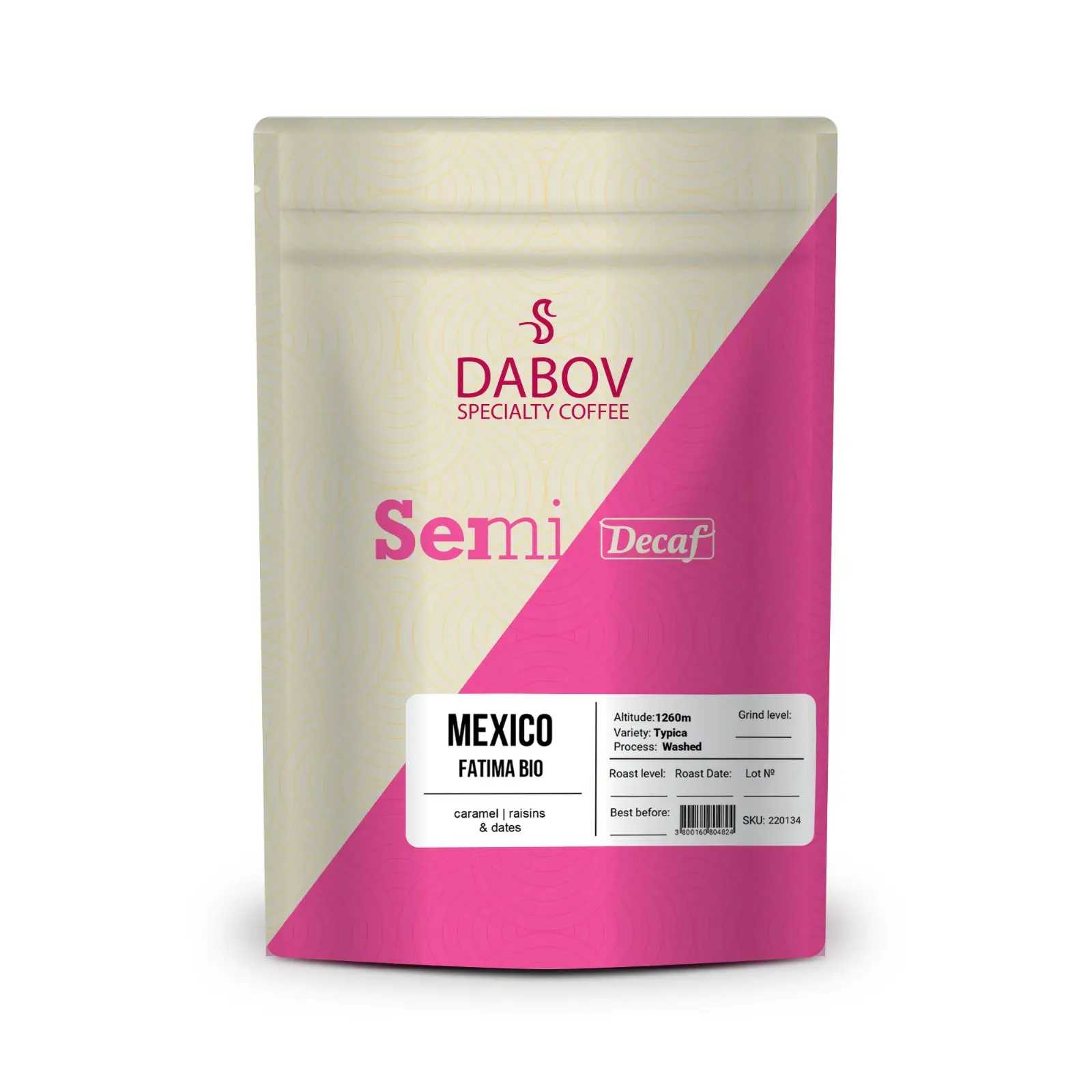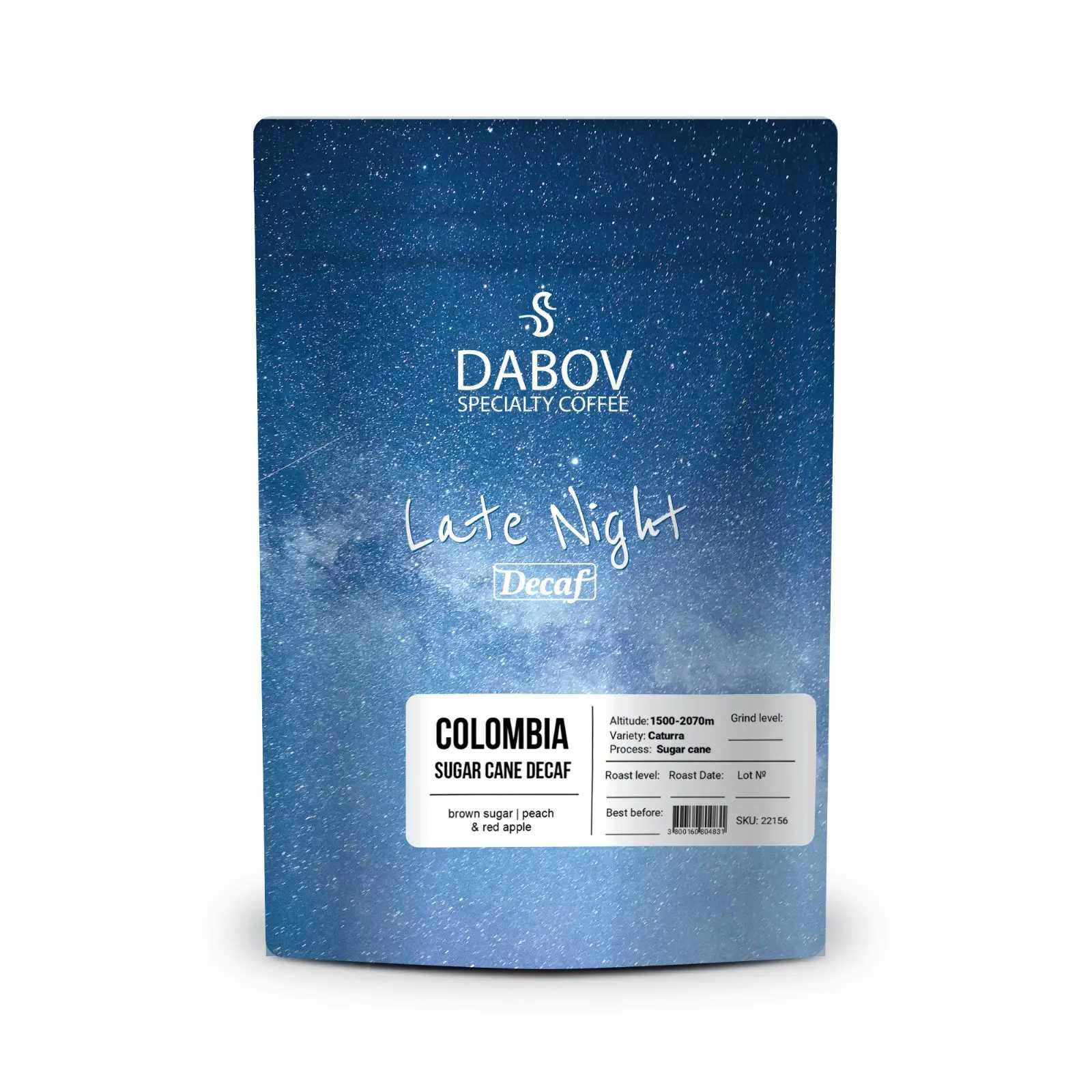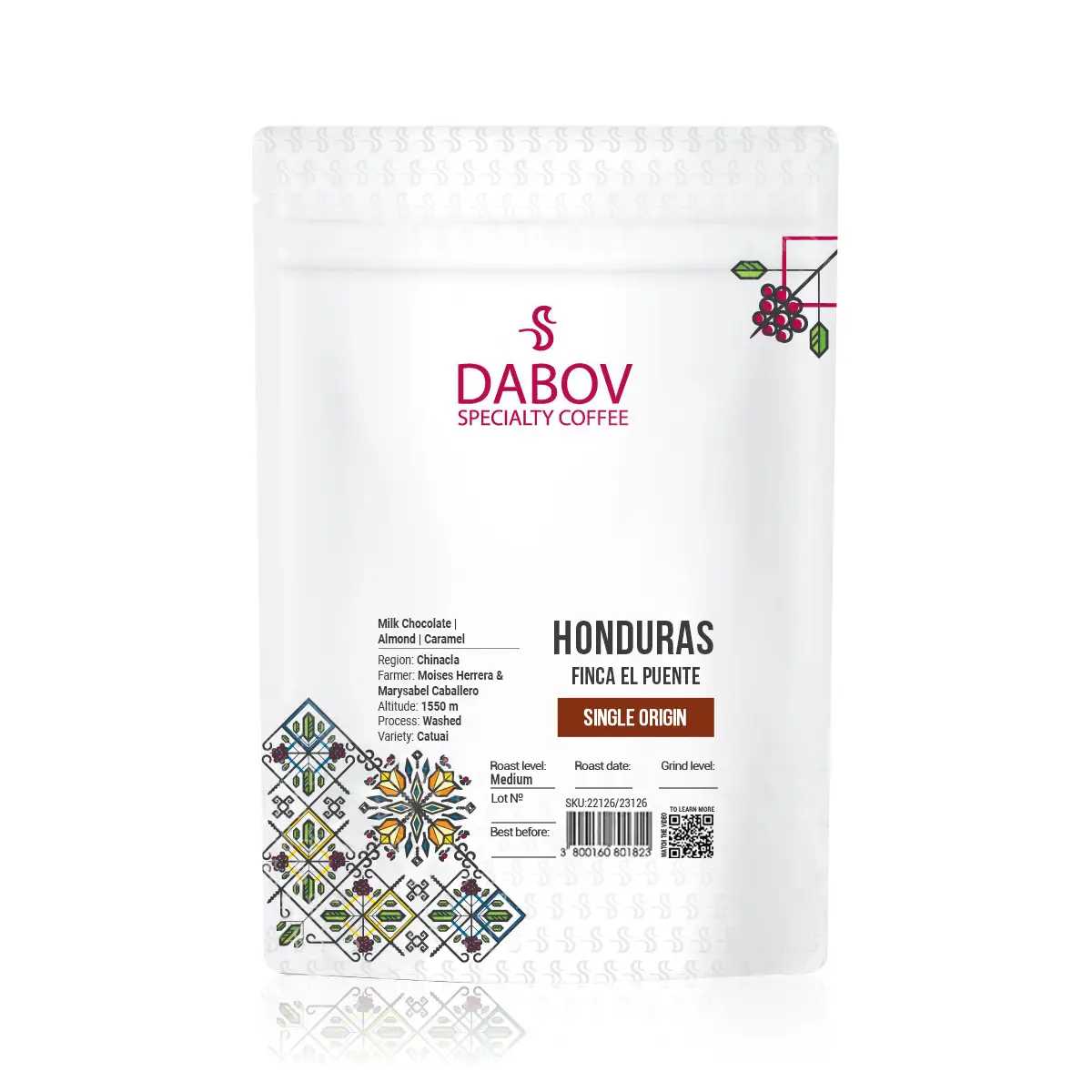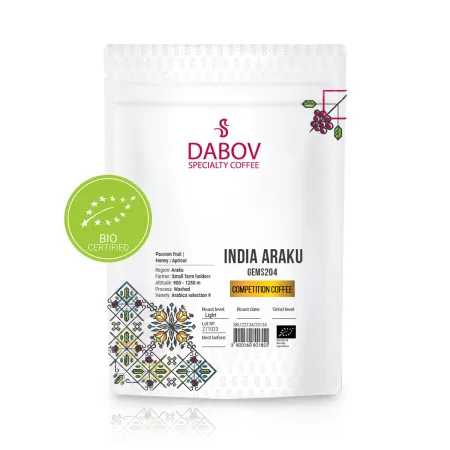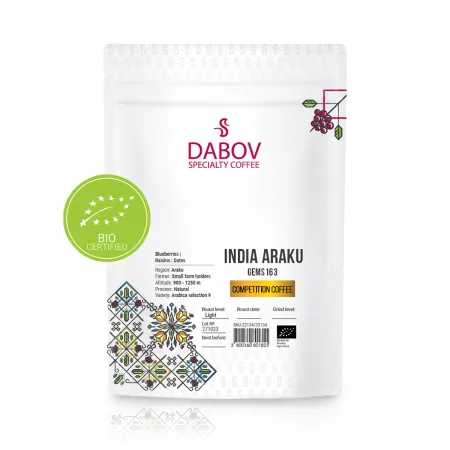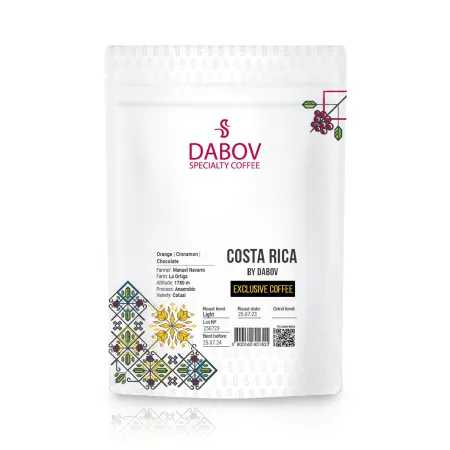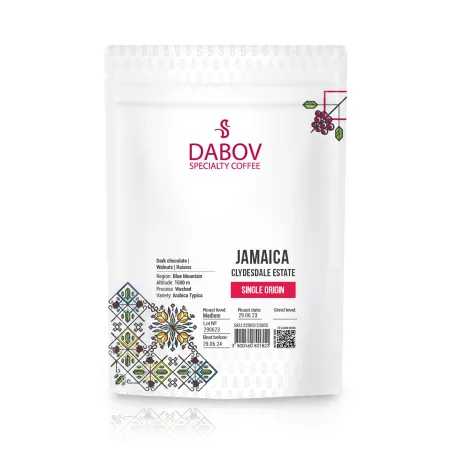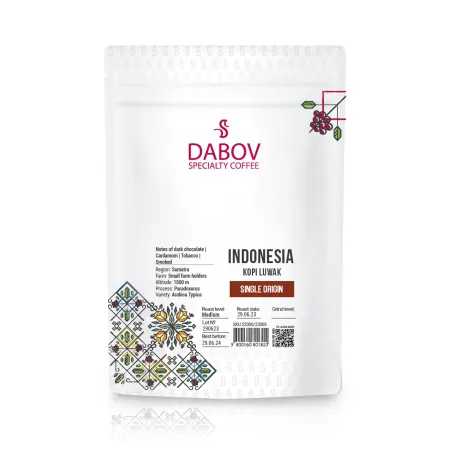The Economics of Coffee Trading A Comprehensive Guide
Explore the complex world of coffee trading economics in this comprehensive guide. Discover how global market dynamics, currency fluctuations, and consumption trends shape the coffee industry. With insights into the trading process, major players, and sustainable practices, this article serves as an essential resource for industry stakeholders. Whether you’re a trader, investor, or simply a coffee enthusiast, understanding these economic principles can greatly influence your approach to the coffee market. Dive deep into the future outlook and innovations that are set to redefine the landscape, making your coffee knowledge sharper than ever.
Introduction
Coffee, the aromatic elixir that fuels millions of people worldwide, is not just a beloved beverage but also a significant player in the global economy. As one of the most traded commodities in the world, coffee's economic impact stretches far beyond our morning cups. The coffee industry is a complex web of producers, traders, roasters, and consumers, all interconnected by the intricate dynamics of supply and demand. Understanding the economics of coffee trading is crucial for anyone involved in or interested in this fascinating sector.
1.1 Overview of Coffee Trading
Coffee trading is a multibillion-dollar industry that affects economies across the globe. From the small-scale farmers in the highlands of Ethiopia to the bustling coffee shops in metropolitan cities, the coffee trade creates a ripple effect that touches countless lives. The industry's economic significance is underscored by the fact that coffee is the second most valuable commodity exported by developing countries, surpassed only by oil. This brown gold supports the livelihoods of over 25 million farmers worldwide, primarily in developing nations.
The coffee trade is characterized by its volatility, influenced by factors such as weather patterns, geopolitical events, and changing consumer preferences. The journey of coffee from seed to cup involves a myriad of economic transactions, each adding value and complexity to the final product. Understanding these intricacies is essential for anyone looking to navigate the coffee market successfully.
1.2 Importance of Understanding Coffee Trading Economics
Grasping the nuances of coffee trading economics is not just an academic exercise; it's a practical necessity for a wide range of stakeholders. For traders, a deep understanding of market dynamics can mean the difference between substantial profits and significant losses. The ability to anticipate market trends, interpret economic indicators, and make informed decisions based on a comprehensive understanding of coffee economics can provide a crucial competitive edge in this fast-paced industry.
Consumers, too, benefit from understanding coffee trading economics. As coffee prices fluctuate, so does the cost of that daily latte. By understanding the factors that influence these price changes, consumers can make more informed purchasing decisions and better appreciate the value chain that brings their favorite brew to their cup.
Investors looking to diversify their portfolios often turn to commodities like coffee. A solid grasp of coffee trading economics allows them to assess risks and opportunities more accurately, making more informed investment decisions. Whether it's investing in coffee futures or stocks of coffee-related companies, understanding the underlying economic principles is crucial for success.
Moreover, policymakers and development organizations can leverage this knowledge to create more effective strategies for supporting coffee-producing regions. By understanding the economic challenges and opportunities in the coffee sector, they can design policies and programs that promote sustainable development and improve livelihoods in coffee-growing communities.
In essence, understanding coffee trading economics is not just about numbers and market trends; it's about comprehending a global system that connects farmers in remote villages to consumers in urban centers, and everything in between. It's about recognizing the human stories behind each transaction and the potential for coffee to be a force for economic development and social change.
As we delve deeper into this comprehensive guide, we'll explore the multifaceted world of coffee trading economics, from the factors that influence coffee prices to the intricacies of the trading process. We'll examine market trends, discuss business strategies, and look at the future of this dynamic industry. Whether you're a seasoned coffee trader, an aspiring entrepreneur, or simply a curious coffee lover, this guide will provide you with valuable insights into the fascinating world of coffee economics.
Section 2: Understanding Coffee Economics
2.1 The Coffee Industry Landscape
The coffee industry is a vast and complex ecosystem that spans the globe, involving millions of people and billions of dollars. At its core, the industry can be divided into four main segments: production, processing, trading, and consumption. Each of these segments plays a crucial role in shaping the economics of coffee.
Production is the foundation of the coffee industry. Coffee is primarily grown in what's known as the "Bean Belt," a region between the Tropics of Cancer and Capricorn. This area includes countries in Central and South America, Africa, and Asia. Brazil is the world's largest coffee producer, followed by Vietnam and Colombia. The production process is labor-intensive and highly dependent on environmental factors, making it vulnerable to climate change and weather fluctuations.
Processing involves transforming the harvested coffee cherries into green coffee beans ready for export. This stage includes various methods such as wet processing (washed coffee) and dry processing (natural coffee), each affecting the final flavor profile and value of the beans. The processing stage is critical in determining the quality and, consequently, the price of the coffee.
Trading is where the economics of coffee truly come into play. Coffee is traded both as a physical commodity and through futures contracts on exchanges like the Intercontinental Exchange (ICE) in New York for Arabica coffee and the London International Financial Futures and Options Exchange (LIFFE) for Robusta coffee. These exchanges play a crucial role in price discovery and risk management for the industry.
Consumption is the final stage of the coffee journey. The global coffee market has been growing steadily, with new markets emerging in traditionally tea-drinking countries like China and India. The rise of specialty coffee and the third-wave coffee movement has also significantly impacted consumption patterns and pricing dynamics.
Key players in the coffee industry include multinational corporations like Nestlé and Starbucks, large trading houses such as Neumann Kaffee Gruppe and ECOM Agroindustrial, and countless small-scale farmers and local roasters. Each of these actors influences and is influenced by the economics of coffee trading.
2.2 Factors Influencing Coffee Prices
Coffee prices are notoriously volatile, influenced by a complex interplay of factors. Understanding these factors is crucial for anyone involved in coffee trading economics. Let's delve into some of the key elements that impact coffee prices:
- Supply and Demand: As with any commodity, the basic principle of supply and demand is a fundamental driver of coffee prices. When supply exceeds demand, prices tend to fall, and vice versa. However, coffee's supply and demand dynamics are complicated by the fact that coffee trees take several years to mature and produce beans, making it difficult for supply to quickly adjust to changes in demand.
- Weather Conditions: Coffee plants are sensitive to weather conditions, and adverse weather events can significantly impact production. Frost in Brazil, droughts in Vietnam, or excessive rainfall in Colombia can all lead to reduced yields and higher prices. Conversely, ideal growing conditions can result in bumper crops and lower prices.
- Geopolitical Issues: Political instability in coffee-producing countries can disrupt production and exports, leading to supply shortages and price increases. For example, civil unrest in coffee-producing regions of Africa has historically led to supply disruptions and price volatility.
- Speculation: Coffee futures are traded on commodity exchanges, and speculative activity by traders can influence prices. Large buy or sell orders from speculators can cause short-term price fluctuations that may not reflect the underlying supply and demand fundamentals.
- Currency Fluctuations: As coffee is typically priced in US dollars, changes in exchange rates can affect the purchasing power of coffee-importing countries and the income of coffee-exporting countries, influencing both demand and supply.
- Production Costs: Changes in the cost of inputs such as fertilizers, labor, and transportation can affect the overall cost of production, which in turn influences prices.
- Government Policies: Policies in both producing and consuming countries can impact coffee prices. For example, export quotas, import tariffs, or subsidies can all affect the supply and demand balance.
- Consumer Trends: Shifts in consumer preferences, such as the growing demand for specialty and sustainably sourced coffee, can influence prices for specific types of coffee.
- Global Economic Conditions: The overall state of the global economy can impact coffee consumption and, consequently, prices. Economic downturns may lead to reduced coffee consumption, particularly in out-of-home settings.
- Climate Change: Long-term climate trends are increasingly impacting coffee production, with some traditional growing areas becoming less suitable for coffee cultivation. This could lead to supply constraints and higher prices in the future.
Understanding these factors and their interplay is essential for predicting price movements and making informed decisions in the coffee market. It's important to note that these factors often work in combination, making price forecasting a complex and challenging task.
2.3 The Impact of Currency Fluctuations
Currency fluctuations play a significant role in coffee trading economics, influencing everything from production costs to final retail prices. As coffee is typically traded in US dollars on international markets, exchange rate movements can have far-reaching effects on the entire coffee value chain.
For coffee-producing countries, a weaker local currency relative to the US dollar can be a double-edged sword. On one hand, it makes their coffee more competitive on the global market, as buyers can purchase more coffee for the same amount of dollars. This can lead to increased export revenues for producers. On the other hand, a weaker currency increases the cost of imported inputs such as fertilizers and machinery, potentially offsetting some of the gains from increased exports.
Conversely, a stronger local currency in producing countries can make their coffee more expensive on the global market, potentially reducing demand. However, it also reduces the cost of imported inputs, which can help maintain profit margins for producers.
For coffee-importing countries, currency fluctuations can significantly impact the cost of coffee. A stronger US dollar makes coffee more expensive for importers using other currencies, potentially leading to higher retail prices or reduced profit margins for roasters and retailers.
Currency movements can also influence consumer behavior. In countries where the local currency has weakened against the dollar, consumers may face higher coffee prices, potentially leading to reduced consumption or a shift to lower-priced alternatives.
Traders and investors in the coffee market must constantly monitor currency movements and their potential impacts. Many use currency hedging strategies to mitigate the risks associated with exchange rate fluctuations. These strategies might involve using forward contracts, options, or other financial instruments to lock in exchange rates for future transactions.
It's worth noting that the relationship between currency movements and coffee prices is not always straightforward. While a weaker currency in a major producing country like Brazil might be expected to lead to lower dollar-denominated coffee prices, other factors such as supply and demand dynamics, weather conditions, or speculative activity can override or amplify the currency effect.
Understanding the impact of currency fluctuations is crucial for anyone involved in coffee trading economics. It requires a global perspective, considering not just the US dollar but also the currencies of major producing and consuming countries. By factoring in currency movements alongside other market fundamentals, stakeholders in the coffee industry can make more informed decisions and better manage their risks in this dynamic global market.
Section 3: Coffee Market Guide
3.1 Types of Coffee Beans and Their Economic Impacts
In the world of coffee, two main species dominate the market: Coffea arabica (Arabica) and Coffea canephora (Robusta). These two types of coffee beans have distinct characteristics that significantly influence their economic value and market dynamics.
Arabica coffee is widely considered the superior bean, known for its smooth, complex flavor profile with notes of sugar, fruit, and berries. It accounts for about 60-70% of global coffee production. Arabica plants are more delicate, requiring specific growing conditions including higher altitudes, steady temperatures, and abundant rainfall. These exacting requirements make Arabica more challenging and costly to produce, which is reflected in its higher market price.
Economically, Arabica coffee commands a premium in the market due to its perceived higher quality. It's the preferred choice for specialty coffee shops and high-end roasters. The price of Arabica is generally more volatile than Robusta, as it's more susceptible to weather conditions and diseases. A frost or drought in a major Arabica-producing region like Brazil can send prices soaring globally.
Robusta coffee, on the other hand, is hardier and more resistant to disease, as its name suggests. It can be grown at lower altitudes and is less sensitive to weather conditions. Robusta has a stronger, harsher taste with a grainy overtone and peanutty aftertaste. It contains almost twice as much caffeine as Arabica. Robusta accounts for about 30-40% of global coffee production.
From an economic perspective, Robusta is generally cheaper to produce and sells at a lower price point than Arabica. It's commonly used in instant coffee production and as a filler in some coffee blends to reduce costs. The lower price of Robusta makes it an important crop for many developing countries, particularly in Africa and Asia.
The economic impacts of these two types of coffee beans extend beyond just their price differences. They influence farming practices, processing methods, and even the economic development of coffee-producing regions. Countries that primarily produce high-quality Arabica, like Colombia or Ethiopia, often focus on developing specialty coffee markets and building brand recognition for their beans. In contrast, major Robusta producers like Vietnam often compete more on volume and price.
Understanding the differences between Arabica and Robusta is crucial for anyone involved in coffee trading economics. The ratio of Arabica to Robusta production and consumption can significantly impact global coffee prices. Moreover, changing consumer preferences, such as the growing demand for high-quality specialty coffee, can shift the economic balance between these two types of beans.
Climate change is adding another layer of complexity to this dynamic. As global temperatures rise, some traditional Arabica-growing regions may become less suitable for cultivation, potentially leading to a shift in production patterns and economic impacts on coffee-producing countries.
In recent years, there's been growing interest in other coffee species and varieties, such as Liberica and Excelsa, as well as hybrid varieties that combine desirable traits from different species. While these currently play a minor role in the global coffee trade, they could potentially impact coffee economics in the future, especially if they offer solutions to challenges like climate change resilience or disease resistance.
3.2 Major Coffee Producing Countries
The global coffee industry is dominated by a handful of major producing countries, each with its unique economic circumstances and impact on the world coffee market. Understanding the role of these key players is essential for grasping the intricacies of coffee trading economics.
- Brazil: As the world's largest coffee producer, Brazil accounts for about one-third of global coffee production. The country is known for its large-scale, mechanized coffee farms, particularly in regions like Minas Gerais and São Paulo. Brazil primarily produces Arabica coffee, but also grows some Robusta. The sheer volume of Brazil's production means that any fluctuations in its output can have significant impacts on global coffee prices. For example, a frost in Brazil's coffee-growing regions can send world coffee prices soaring.
- Vietnam: The second-largest coffee producer globally, Vietnam is the world's leading producer of Robusta coffee. The country's coffee industry has grown rapidly since the 1990s, driven by government policies promoting coffee cultivation. Vietnam's low-cost, high-volume production model has had a significant impact on global coffee prices, particularly in the Robusta market.
- Colombia: Known for its high-quality Arabica beans, Colombia is the third-largest coffee producer. The country has successfully marketed its coffee internationally, with the character Juan Valdez becoming an iconic symbol of Colombian coffee. Colombia's coffee sector is characterized by small-scale farmers and a focus on quality, which has helped the country maintain higher prices for its beans compared to bulk producers.
- Indonesia: The fourth-largest producer globally, Indonesia is known for both Arabica and Robusta production. The country's unique geography, spread across thousands of islands, results in a diverse range of coffee flavors. Sumatra, in particular, is famous for its distinctive, full-bodied coffees.
- Ethiopia: The birthplace of coffee, Ethiopia is the largest coffee producer in Africa. The country is known for its high-quality, distinctive Arabica varieties, many of which grow wild. Ethiopia's coffee sector is crucial to its economy, accounting for a significant portion of its export earnings.
- Honduras: The largest coffee producer in Central America, Honduras has seen significant growth in its coffee sector in recent years. The country primarily produces Arabica coffee and has been focusing on improving quality to compete in the specialty coffee market.
- India: A significant producer of both Arabica and Robusta, India's coffee production is concentrated in the southern states. The country's unique monsoon-processed coffees have gained international recognition.
These major producing countries play a crucial role in shaping the economics of the global coffee trade. Their production levels, quality standards, and domestic policies all influence world coffee prices and trade flows. For instance, a bumper crop in Brazil might lead to oversupply and lower prices, while a drought in Vietnam could cause Robusta prices to spike.
Moreover, the economic importance of coffee varies greatly among these countries. For some, like Ethiopia and Honduras, coffee exports are a crucial source of foreign exchange and a significant contributor to GDP. For larger, more diversified economies like Brazil and India, coffee is an important but not dominant export crop.
Climate change poses a significant challenge to many of these producing countries. Rising temperatures and changing rainfall patterns could alter the suitability of traditional coffee-growing regions, potentially shifting the geography of coffee production in the coming decades. This could have profound economic implications for current major producers and potentially create opportunities for new regions to enter the market.
Understanding the dynamics of these major producing countries is crucial for anyone involved in coffee trading. Their production forecasts, weather conditions, and policy changes are closely watched by traders and can cause significant movements in the coffee market. As the coffee industry continues to evolve, keeping a close eye on developments in these key producing countries will remain essential for navigating the complex world of coffee trading economics.
3.3 Coffee Consumption Trends
Coffee consumption trends play a crucial role in shaping the economics of the coffee industry. Understanding these trends is essential for anyone involved in coffee trading, as they directly impact demand, pricing, and market opportunities. Let's explore some of the key consumption trends influencing the coffee market today.
- Growing Global Consumption: Overall, global coffee consumption has been steadily increasing. The International Coffee Organization (ICO) reports that global coffee consumption has grown at an average annual rate of about 2% over the past decade. This growth is driven by both traditional markets in North America and Europe and emerging markets in Asia and Africa.
- Emergence of New Markets: While traditional markets like the United States and Europe remain significant, emerging markets are becoming increasingly important. Countries like China and India, traditionally tea-drinking nations, are seeing rapid growth in coffee consumption. This shift is creating new opportunities for coffee traders and producers.
- Rise of Specialty Coffee: The specialty coffee segment has seen significant growth in recent years. Consumers are increasingly interested in high-quality, single-origin coffees with unique flavor profiles. This trend has led to the development of niche markets and has allowed some producers to command premium prices for their beans.
- Sustainability and Ethical Sourcing: There's a growing consumer demand for sustainably and ethically sourced coffee. Certifications like Fair Trade, Rainforest Alliance, and organic are becoming more important in consumer decision-making. This trend is influencing how coffee is produced and traded, with potential impacts on pricing and supply chain management.
- Ready-to-Drink and Cold Brew: The ready-to-drink coffee market, including cold brew, has seen explosive growth. This trend is changing how coffee is consumed and opening up new market segments. It's also influencing demand for different types of coffee beans, as some varieties are better suited for cold brewing.
- Home Brewing: The COVID-19 pandemic accelerated a trend towards home brewing, as many consumers invested in home coffee equipment. This shift has implications for both the retail and foodservice sectors of the coffee industry.
- Premiumization: In many markets, there's a trend towards premium coffee products. Consumers are willing to pay more for higher quality, unique experiences, or perceived health benefits. This trend is driving innovation in the industry and creating opportunities for differentiation.
- Health and Wellness: Coffee is increasingly being viewed as part of a healthy lifestyle, with research highlighting its potential health benefits. This perception is driving consumption in some markets and influencing product development, such as the rise of functional coffee products enhanced with vitamins or other supplements.
- Generational Differences: Younger consumers, particularly millennials and Gen Z, are driving many of the trends in coffee consumption. They tend to value experiences, sustainability, and unique flavors, which is reflected in their coffee choices.
- Digitalization: The growth of e-commerce and mobile apps is changing how consumers purchase coffee. Direct-to-consumer models and subscription services are becoming more common, potentially disrupting traditional retail channels.
These consumption trends have significant implications for coffee trading economics. They influence which types of coffee are in demand, how coffee is priced, and where market opportunities lie. For example, the growth of specialty coffee has created opportunities for some producers to differentiate their products and command higher prices. Similarly, the emphasis on sustainability is driving changes in production practices and supply chain management.
For traders and investors, understanding these trends is crucial for making informed decisions. A trader might, for instance, focus on sourcing high-quality Arabica beans to meet the growing demand for specialty coffee, or look for opportunities in emerging markets where coffee consumption is on the rise.
It's important to note that these trends can vary significantly between different markets and demographic groups. What's popular in one country or among one age group may not be the same in another. Therefore, a nuanced understanding of regional and demographic differences in consumption patterns is essential.
Moreover, these trends are not static. They evolve over time, influenced by factors such as changing consumer preferences, economic conditions, and global events. Staying abreast of these changes and their potential impacts on coffee demand and pricing is a constant challenge for those involved in coffee trading.
In conclusion, coffee consumption trends are a key driver of the economics of the coffee industry. By understanding and anticipating these trends, stakeholders in the coffee trade can better position themselves to meet market demands, manage risks, and capitalize on emerging opportunities in this dynamic global market.
Section 4: The Coffee Trading Process
4.1 Overview of Coffee Trading
The coffee trading process is a complex journey that transforms coffee from a raw agricultural product to a global commodity. Understanding this process is crucial for anyone involved in coffee trading economics. Let's break down the key stages of this journey:
- Production: The process begins with coffee farmers cultivating and harvesting coffee cherries. This stage is heavily influenced by factors such as weather conditions, soil quality, and farming practices. The production phase can last several months, from flowering to harvest.
- Processing: After harvesting, coffee cherries are processed to extract the beans. This can be done through wet processing (washed coffee) or dry processing (natural coffee). The method used can significantly impact the flavor profile and quality of the coffee.
- Grading and Sorting: Processed coffee beans are graded based on various factors including size, density, and defect count. This grading plays a crucial role in determining the coffee's value in the market.
- Storage and Transportation: Green coffee beans are stored in warehouses and then transported to ports for export. Proper storage is crucial to maintain the quality of the beans.
- Export: Coffee is typically exported as green beans. Exporters play a crucial role in bridging the gap between producers and international buyers. They handle logistics, quality control, and often provide financing to farmers.
- Import: Coffee-consuming countries import green beans. Importers manage the logistics of bringing coffee into the country, including customs clearance and adherence to import regulations.
- Roasting: After import, coffee beans are roasted according to specific profiles to bring out desired flavors. Roasters play a significant role in determining the final taste of the coffee.
- Distribution: Roasted coffee is then distributed to retailers, cafes, and other end-users.
- Consumption: The final stage is when the coffee reaches the consumer, either as whole beans, ground coffee, or as a prepared beverage.
Throughout this process, coffee is traded at various points. The most significant trading occurs at the export/import stage, where coffee is bought and sold as a commodity. This is where much of the price discovery happens, influenced by global supply and demand dynamics.
Coffee futures contracts play a crucial role in this trading process. These financial instruments allow buyers and sellers to agree on a price for coffee to be delivered at a future date. Futures contracts serve several purposes:
- Price Discovery: They help establish benchmark prices for coffee.
- Risk Management: They allow stakeholders to hedge against price fluctuations.
- Speculation: They provide opportunities for traders to profit from price movements.
The New York Mercantile Exchange (NYMEX) and the Intercontinental Exchange (ICE) are the primary platforms for trading coffee futures, with contracts typically based on Arabica coffee. For Robusta coffee, the London International Financial Futures and Options Exchange (LIFFE) is the main trading platform.
It's important to note that only a small percentage of futures contracts result in actual delivery of coffee. Most are closed out before the delivery date, serving primarily as financial instruments for price risk management.
In addition to futures trading, there's also a significant spot market for coffee, where physical coffee is bought and sold for immediate delivery. This market is often used by roasters and importers to meet short-term needs.
The coffee trading process is influenced by numerous factors, including:
- Weather conditions in producing countries
- Political and economic stability in producing regions
- Currency exchange rates
- Global economic conditions
- Changes in consumer preferences
- Speculation in the futures market
Understanding these factors and how they interact is crucial for successful participation in the coffee trade. Traders must constantly monitor a wide range of indicators and news sources to make informed decisions.
In recent years, there's been a growing trend towards more direct trade relationships between roasters and producers. This model aims to increase transparency and ensure fairer prices for farmers. While still a small part of the overall coffee trade, it represents a significant shift in how some specialty coffee is bought and sold.
The coffee trading process is also being impacted by technological advancements. Blockchain technology, for instance, is being explored as a way to increase traceability and transparency in the coffee supply chain. Online trading platforms are making it easier for smaller players to participate in the global coffee trade.
In conclusion, the coffee trading process is a complex system involving numerous stakeholders across the globe. It combines elements of agriculture, logistics, finance, and consumer goods. Understanding this process and staying attuned to the factors that influence it is essential for anyone involved in coffee trading economics. As the industry continues to evolve, driven by changing consumer preferences and technological advancements, so too will the intricacies of the coffee trading process.
4.2 Key Players in Coffee Trading
The coffee trading ecosystem is composed of various stakeholders, each playing a crucial role in moving coffee from farm to cup. Understanding these key players and their functions is essential for grasping the intricacies of coffee trading economics. Let's explore the main actors in this complex network:
- Producers: At the foundation of the coffee industry are the producers or farmers. These range from small-scale family farmers, who make up the majority of coffee producers worldwide, to large commercial plantations. Producers are responsible for cultivating, harvesting, and often the initial processing of coffee cherries. Their role is critical in determining the quality and quantity of coffee entering the market.
- Cooperatives: Many small-scale farmers join cooperatives to gain better market access and bargaining power. Cooperatives often handle processing, quality control, and marketing on behalf of their members. They play a crucial role in aggregating supply and connecting small producers to the global market.
- Exporters: Coffee exporters purchase coffee from producers or cooperatives and sell it to international buyers. They play a vital role in bridging the gap between producing and consuming countries. Exporters handle logistics, quality control, and often provide financing to farmers. They need to have a deep understanding of both local production conditions and international market demands.
- Importers: On the consuming country side, importers buy coffee from exporters and sell it to roasters. They manage the complex logistics of international coffee shipments, including customs clearance, warehousing, and distribution. Importers often act as a buffer between the volatility of the producing countries and the more stable demands of roasters.
- Traders: Coffee traders operate at various levels of the supply chain, buying and selling coffee both as a physical commodity and through futures contracts. Large multinational trading houses like Neumann Kaffee Gruppe, ECOM Agroindustrial, and Louis Dreyfus Company play a significant role in the global coffee trade. These companies often have operations spanning producing and consuming countries, giving them a comprehensive view of the market.
- Roasters: Roasters buy green coffee beans and roast them to create the final product sold to consumers. They range from small artisanal roasters to large multinational corporations like Nestlé and JDE Peet's. Roasters play a crucial role in determining the final flavor profile of coffee and often drive trends in the consumer market.
- Retailers: This category includes supermarkets, specialty coffee shops, and online retailers who sell coffee directly to consumers. While they may not be directly involved in trading, their purchasing decisions and the trends they promote can significantly influence demand and, consequently, trading patterns.
- Brokers: Coffee brokers act as intermediaries, connecting buyers and sellers. They often specialize in specific types of coffee or regions and can provide valuable market intelligence to their clients.
- Financial Institutions: Banks and other financial institutions play a crucial role in coffee trading by providing financing throughout the supply chain. They offer various financial products, from loans to farmers to complex hedging instruments for large traders.
- Certifying Bodies: Organizations like Fair Trade, Rainforest Alliance, and UTZ provide certifications that are increasingly important in the coffee trade. They set standards for sustainable and ethical production and trade practices.
- Futures Exchanges: Platforms like the Intercontinental Exchange (ICE) and the London International Financial Futures and Options Exchange (LIFFE) provide the infrastructure for trading coffee futures and options. These exchanges play a crucial role in price discovery and risk management.
- Government Agencies: In many producing countries, government agencies regulate and sometimes participate directly in the coffee trade. For example, the National Federation of Coffee Growers of Colombia plays a significant role in managing Colombia's coffee sector.
- International Organizations: Bodies like the International Coffee Organization (ICO) work to strengthen the global coffee sector through international cooperation. They provide valuable data and analysis that inform trading decisions.
- Logistics Providers: Specialized shipping companies, warehouses, and logistics firms play a crucial role in moving coffee around the world efficiently and safely.
- Quality Control Specialists: These include coffee cuppers, graders, and laboratories that assess coffee quality. Their evaluations can significantly impact the price and marketability of coffee lots.
Each of these players interacts with others in complex ways, creating the dynamic ecosystem of coffee trading. For example, a small-scale farmer in Ethiopia might sell their coffee to a local cooperative, which then sells to an exporter. The exporter might work with a trader to sell the coffee to an importer in Germany, who then sells to a roaster. The roaster might then sell the roasted coffee to a retailer or directly to consumers.
Understanding the roles and motivations of these various players is crucial for anyone involved in coffee trading. Each actor has different priorities, risk tolerances, and information sources, all of which influence their decision-making and, consequently, the overall dynamics of the coffee market.
Moreover, the relationships between these players are evolving. For instance, there's a growing trend towards direct trade, where roasters build direct relationships with producers, potentially bypassing traditional intermediaries. Similarly, digital platforms are emerging that aim to connect producers more directly with buyers, potentially disrupting traditional trading models.
In conclusion, the coffee trading ecosystem is a complex network of interdependent actors, each playing a crucial role in moving coffee from farm to cup. Understanding these key players, their roles, and how they interact is essential for navigating the intricacies of coffee trading economics. As the industry continues to evolve, driven by changing consumer preferences, technological advancements, and sustainability concerns, so too will the roles and relationships of these key players in the coffee trade.
4.3 The Role of Exchanges and Futures Contracts
Exchanges and futures contracts play a pivotal role in the coffee trading ecosystem, providing essential mechanisms for price discovery, risk management, and market efficiency. Understanding their function is crucial for anyone involved in coffee trading economics. Let's delve into the intricacies of these important market components.
Coffee Exchanges:The two primary exchanges for coffee futures are the Intercontinental Exchange (ICE) in New York, which trades Arabica coffee futures, and the London International Financial Futures and Options Exchange (LIFFE), now part of ICE, which trades Robusta coffee futures. These exchanges provide standardized contracts and a centralized marketplace for buyers and sellers to trade coffee futures.
Key functions of coffee exchanges include:
- Price Discovery: Exchanges facilitate the continuous interaction of buyers and sellers, helping to determine fair market prices for coffee based on current supply and demand conditions.
- Liquidity: By bringing together numerous market participants, exchanges ensure that there's always a counterparty for trades, providing liquidity to the market.
- Standardization: Exchanges set standard contract specifications, including quantity, quality, and delivery terms, which facilitates efficient trading.
- Transparency: Prices and trading volumes on exchanges are publicly available, providing valuable market information to all participants.
- Regulation: Exchanges operate under strict regulatory oversight, helping to ensure fair trading practices and market integrity.
Futures Contracts:Coffee futures contracts are agreements to buy or sell a specific quantity of coffee at a predetermined price on a future date. The standard contract on the ICE for Arabica coffee is for 37,500 pounds, while the LIFFE Robusta contract is for 10 tonnes.
Key aspects of coffee futures contracts include:
- Risk Management: Futures allow coffee industry participants to hedge against price fluctuations. For example, a roaster can lock in a future purchase price, while a producer can secure a selling price for their upcoming harvest.
- Speculation: Futures also attract speculators who aim to profit from price movements without intending to take physical delivery of coffee. While sometimes controversial, speculators provide liquidity to the market.
- Delivery Mechanism: Although most futures contracts are closed out before expiration, they provide a mechanism for physical delivery of coffee, which helps to keep futures prices aligned with the physical market.
- Basis for Other Financial Instruments: Futures prices serve as the basis for other financial instruments like options and swaps, further enhancing risk management capabilities.
The Importance of Futures in Coffee Trading Economics:
- Price Stability: By allowing market participants to hedge their price risk, futures help to stabilize prices throughout the supply chain. This can lead to more predictable costs for consumers and more stable incomes for producers.
- Market Efficiency: Futures markets help to efficiently allocate resources by providing price signals about future supply and demand expectations.
- Credit Facilitation: The ability to hedge price risk through futures can make it easier for industry participants to obtain credit, as it reduces the lender's risk.
- Global Benchmark: Coffee futures prices serve as a global benchmark, influencing prices in the physical market worldwide.
- Information Aggregation: Futures prices aggregate information from numerous market participants, providing valuable insights into market expectations.
Challenges and Controversies:While exchanges and futures contracts are crucial to the coffee industry, they're not without challenges:
- Volatility: The coffee market can be highly volatile, which can be exacerbated by speculative activity in the futures market.
- Disconnect from Physical Market: At times, there can be a disconnect between futures prices and prices in the physical market, particularly for specialty coffees.
- Accessibility: Small-scale producers often lack direct access to futures markets, potentially putting them at a disadvantage.
- Complexity: The complexity of futures trading can be a barrier for some industry participants, particularly smaller players.
Recent Developments:The coffee futures market continues to evolve. Some recent developments include:
- Increased Electronic Trading: Like many financial markets, coffee futures trading has become increasingly electronic, improving efficiency and accessibility.
- New Contract Specifications: Exchanges have introduced new contract specifications to better serve market needs. For example, ICE has introduced a mini Arabica coffee futures contract to cater to smaller market participants.
- Blockchain Integration: There are ongoing efforts to integrate blockchain technology into coffee trading, which could potentially increase transparency and efficiency in both futures and physical markets.
- Sustainability Focus: There's growing interest in developing futures



